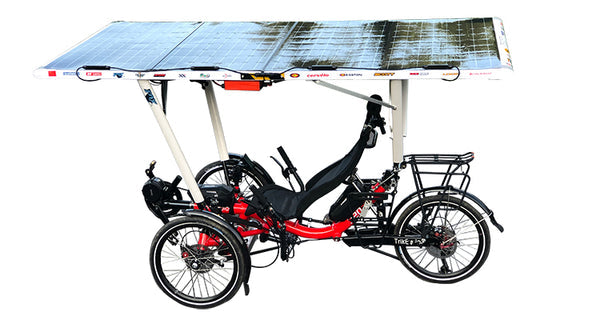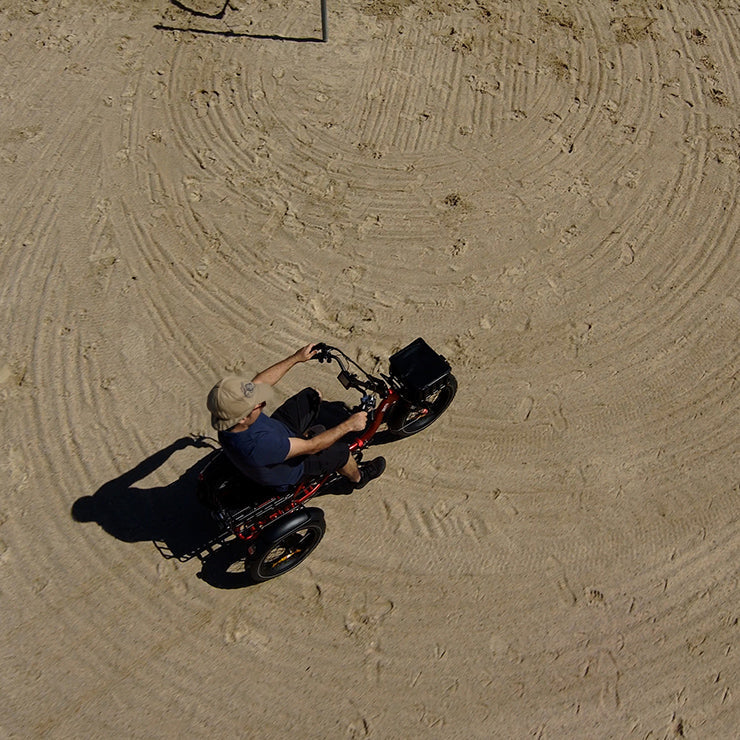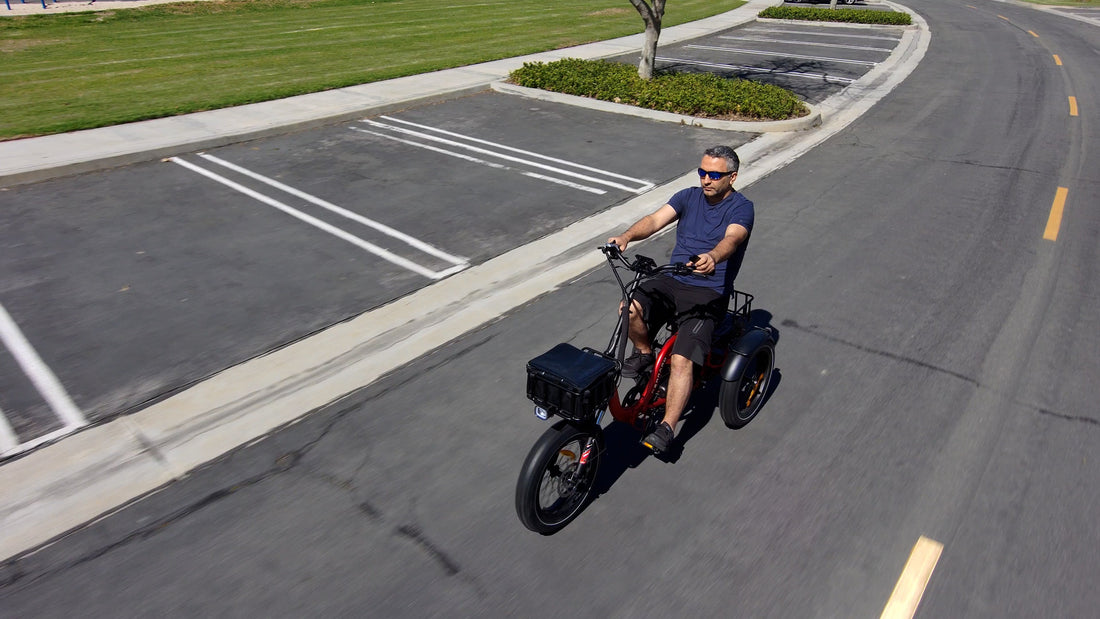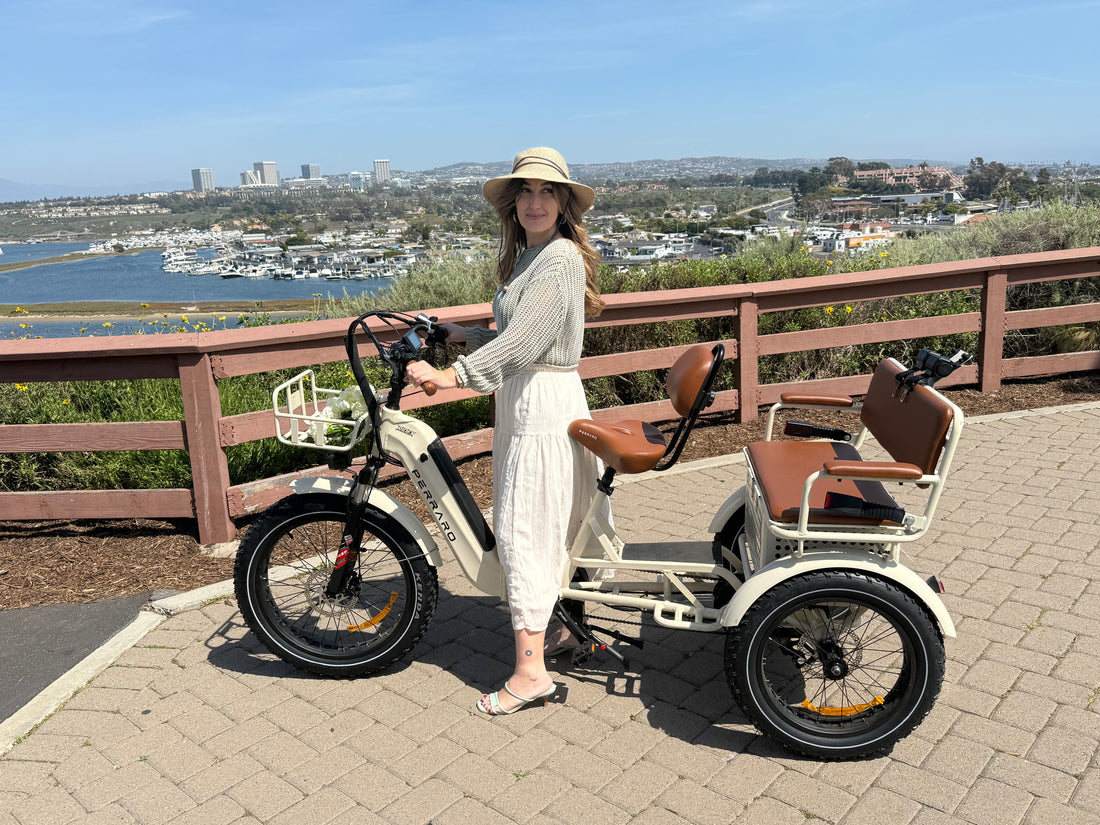While the world is shifting towards clean transport quickly, solar-electric trikes are proving to be a new, green option for short-distance transport. They blend the stability of the three wheels with the efficiency of electricity and the cleanliness of the sun, making them a question worth answering: Do they work in the real world?
Let's find out how solar electric trikes work, their advantages and disadvantages, and whether they are practical for everyday use.
What Are Solar-Powered Electric Trikes?
Solar-powered tricycles are three-wheeled motorized vehicles that run on onboard solar panels as a source of power. As opposed to plug-in electric trikes, the latter use photovoltaic (PV) cells to convert solar energy into electricity.
The typical configuration includes:
- Solar panels mounted on the body or roof of the trike
- Lithium-ion batteries are used to store the energy
- An electric motor to drive
- A controller system to supply energy and control the motor
The design allows the owner to use the sun to power their trike while they are parked in the sun or while they are moving.
How Do They Work?
Solar-powered electric trike operation is quite straightforward:
- Sunlight falls on the solar panels, generating direct current (DC) electricity.
- The electric motor is powered by either direct power input or electricity stored in a battery.
- The stored power can be utilized later, particularly when sunlight is unavailable.
- A smart controller manages the power flow between the panels, battery, and motor.
Other models also include hybrid systems, which can charge using plugging in when sunlight is absent or insufficient.
Advantages of Electric Solar-Powered Trikes
1. Sustainable Transport
The most apparent benefit, perhaps, is sustainability. Trikes are zero-emission during operation and minimize the use of fossil fuels, perfect for environmentally friendly riders.
2. Affordable
Once installed, solar panels cut the cost of electricity significantly. With low charging from the grid, owners are able to accrue substantial savings in the long term in terms of fuel or utility bills.
3. Appropriate for Short Commuting
Electric trikes are best applicable for short urban commutes, last-mile trips, or individual errands. Solar power minimizes the constant charging infrastructure needs.
4. Low Maintenance
Electric trikes have fewer parts to move than conventional vehicles. Solar power does not complicate the system and usually needs minimal maintenance.
5. Off-Grid Capability
Where civilization is distant or in rural regions where electricity is not reliable, solar-powered trikes provide a stand-alone solution.
Challenges and Limitations
Apart from numerous advantages, solar trikes do have some drawbacks.
1. Limited Surface Area for Solar Panels
A trike's compact nature means that too many solar panels cannot be used. This limits the number of solar panels on a trike, with the resultant lower amounts of energy, particularly relative to an installation in a vehicle or in a house.
2. Slower Charging Times
Dependence on the sun alone may lead to slow charging, particularly on rainy or cloudy days. This can be a critical problem for users who depend on their trikes as a means of daily transport.
3. Lower Speed and Range
The majority of electric trikes are for urban use, and therefore they will typically be set up so that the top speed is in the range of 25–35 km/h (15–22 mph) and has a limited range—around 40–60 km (25–37 miles) on a full solar charge.
4. Higher Initial Cost
Solar trikes are more expensive in the long term, but the gear will be more expensive upfront with the solar panels and ancillary electronics, which are used.
Real-World Applications
Even with their limitation, solar electric trikes are already gaining acceptance across much of the globe, especially in:
- Delivery Services: More notably in urban downtown areas where emission controls are tighter.
- Industrial and Campus Transport: They are used for employee transport from factories to universities.
- Mobility and Senior Transport: They are suitable for the elderly as they are stable and do not have sharp turns.
- Tourism: Solar trikes are being used more by city tours and eco-resorts.
More efficient solar cells and lighter materials are being developed by a few startups and makers to make them usable and practical.
Can They Really Work?
Yes, Solar electric trikes powered by the sun are best matched to specific uses, namely short-distance and low-speed uses where sunlight is decently reliable.
They are no substitute for commuting long distances or traveling at high speeds, but they can be an important part of the shift towards sustainable urban transportation.
As technology continues to advance in solar, we will have greater efficiency, faster charging, and lower cost, more viable for the mass market to embrace. With supportive infrastructure and government incentives, they may play a large part in the city's transportation mix within the next decade.
Final Thoughts
Solar-powered electric trikes are a smart combination of clean technology and everyday transportation. Yes, they aren't going to replace everything on the planet, but they do work in the proper environment and will likely be an integral part of clean travel.
If you are thinking of getting one for residential or business purposes, ensure that you budget in terms of daily range needs, availability of sunlight in the vicinity of your area, and affordability. Correct installation would enable you to determine whether a solar trike is all you or even your business premise needs.





